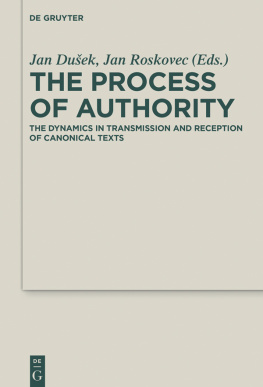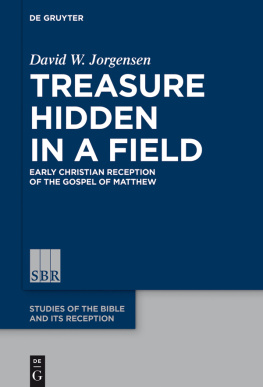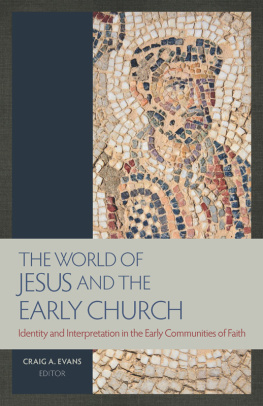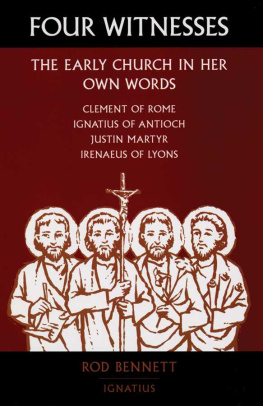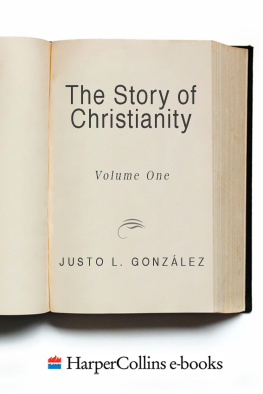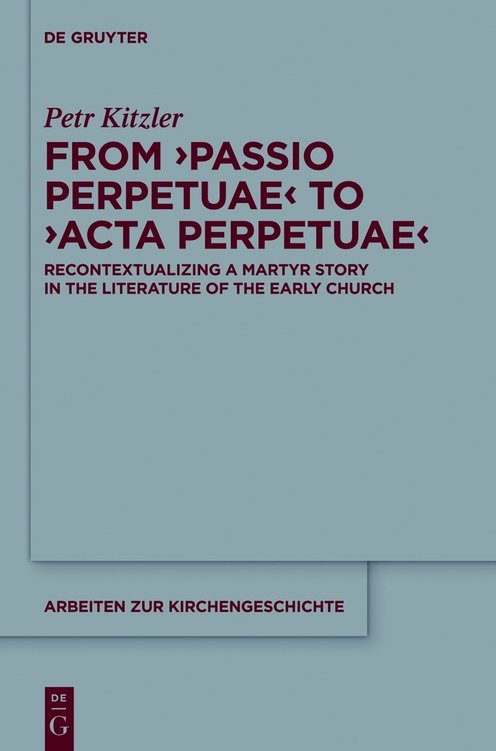Acknowledgements
This work is a substantially updated and revised version of my book Athletae Christi. Ran kesansk hagiografie mezi tradic a inovac (Athletae Christi. Early Christian Hagiography between Imitation and Rewriting), published in Prague in 2012. Even as I was writing the Czech version, I was keenly aware that while the early Christian martyr literature is a rather marginalized subject of research in my country, and the Passio Perpetuae itself is a text receiving very little scholarly interest, this is not the case internationally, where the Passio Perpetuae has continued to receive a remarkable amount of attention from researchers, as is testified by the number of published scholarly studies. Nevertheless, a book that systematically investigates the process of reinterpretation of the Passio Perpetuae that was consummated by the so-called Acta Perpetuae has so far been lacking, a fact which holds true even after the publication of two important works on Perpetua in 2012, T. J. Heffernans commented edition of the text, and the proceedings of the Perpetua conference edited by J. Bremmer and M. Formisano. For this reason I hope that the English version of this book may help to fill in some of the blanks left by previous research on the Passio Perpetuae. In this regard, I owe a huge debt of gratitude to my translators, Josef rejber and Rachel Thompson, for their careful and patient translation.
Writing this book was a natural extension of my professional interest in the earliest Christian martyr literature during my work at the Centre for Patristic, Medieval and Renaissance Texts of Palack University in Olomouc, mainly between 2006 and 2011, though my first published Czech translation of selected sections of the Passio Perpetuae dates back to 2002. This interest culminated in the publication of a 2-volume anthology of early Christian martyr texts (a sort of revised and updated Czech Musurillo) that I and my colleagues from the Centre jointly published in the Prague publishing house Vyehrad in 2009 and 2011 under the title Pbhy ran kesanskch muednk (Stories of Early Christian Martyrs). To my great delight, these publications attracted the notice of foreign scholars, despite the rather limited reach of the Czech language version.
The present work would never have been accomplished without the Mellon Research Fellowship at the Warburg Institute, School of Advanced Study, University of London (May to August 2011), where I had the opportunity to introduce the essential themes of the book. In this connection, I would like to give my thanks most of all to Charles Burnett and Peter Mack. In addition, I owe my gratitude to the Grant Agency of Charles University in Prague for its financial support for the English version under grant project No. 501112, and mainly to the Centre for Classical Studies at the Institute of Philosophy of the Czech Academy of Sciences in Prague, my primary place of work, which provided me with the necessary institutional basis for my research. I am indebted to Pavel Spunar from this Centre for his interest, advice and general support, as well as to Petr Pokorn (Charles University Prague), Ji ubrt (Palack University Olomouc), and especially Martin Bail (Charles University Prague / Freie Universitt Berlin) for their thorough reading of the manuscript and all their critical comments. Needless to say, all remaining errors are mine alone.
Further, a number of foreign researchers kindly and selflessly made their studies available to me, which I otherwise would have struggled to access. In this regard I owe my thanks especially to Remo Cacitti (Universit degli studi di Milano), Maria Pia Ciccarese (Universit di Roma La Sapienza), Eliezer Gonzalez (Macquarie University), Vincent Hunink (Radboud Universiteit Nijmegen), Jernimo Leal (Pontificia Universit della Santa Croce, Roma), Candida R. Moss (University of Notre Dame, Indiana), Franois-Xavier Romanacce (Uni-versit de ParisSorbonne), Teresa Sardella (Universit degli Studi di Catania), and Clemens Weidmann (Universitt Salzburg).
Finally, I owe special thanks to my wife Jana, who patiently read every draft of the text, pointing out its shortcomings, and whose critical comments, coming as they did from the refreshing perspective of someone pursuing a wholly different professional specialization, contributed significantly to the resulting form of this book. Without her patience and understanding this book would not have been written; without her presence my whole life would become taetrum chaos.
Conclusion
The first part of this book begins with an outline of the historical context of the earliest martyr literature and then examines the Passio Perpetuae as the pre-text for its later adaptations, recapitulating the individual stages in the evolving understanding and interpretation of the text as these unfolded in the scholarship of the last century. Those facts that can be stated with some degree of probability can be summarised in the following points:
- 1) The Passio Perpetuae was written shortly after the events it recounts, perhaps between 203 and 205.
- 2) The text is made up of three linguistically and stylistically distinct parts. This in principle seems to confirm the claim of the anonymous editor that the narrative contains the very words of the martyrs Perpetua and Saturus, complemented by an account written by the editor himself. Although it is certain that the wording of the text as we have it now was modified by the anonymous editor and hence hardly contains the authentic ipsissima verba of the two martyrs as they wrote them down in their own hand, based on the evidence available to us, we cannot consider the text to be fictitious or forged. The visions in Perpetuas and Saturus sections of the narrative also appear to be authentic.
- 3) The anonymous editor, who probably eyewitnessed the events, was not Tertullian of Carthage. That fact that the editor was an eyewitness does not necessarily imply that his passages of the text correspond verbatim to the actual events.
- 4) Of the two Greek and Latin versions that have survived, the Latin version is to be considered primary, and the Greek one to be a translation, which probably existed by the end of the third century already and may have not been based on the particular Latin version that is available to us today.
- 5) The Passio Perpetuae is not a Montanist document and cannot therefore be viewed through the lens of the subsequent schematic categorization into orthodox and heretic (Montanist).
The Passio Perpetuae contains a number of elements which defied the contemporary social, gender, and theological hierarchies, and these potentially subversive features are dealt with in the second part of this book. In the text, Perpetua is accorded social and spiritual (theological) authority that on the one hand radically challenged the traditional status a young woman of that time would have had, as well as her anchoring in the network of social and familial bonds, especially as far as patria potestas was concerned. On the other hand, Perpetua exemplified the extraordinary power martyrs had within the still unrigid hierarchy of the church on its way to becoming institutionalized. Although similar examples of this power of martyrs can be found in the extant early Christian martyr narratives, and is also attested by several references in Tertullians works, in the Passio Perpetuae these examples appear both to an exceptional extent and are given a very clear articulation.
The gamut of these spiritual gifts goes far beyond the charismata known from the previous tradition (prophetic visions; the presence of Christ in the martyrs and their close contact with him; or martyrs intercessory powers through which believers beg for the forgiveness of their own sins), and some of the aspects can be described as unprecedented. This applies not only to Perpetuas implicitly indicated power to settle disputes between high church dignitaries, but above all to the fact that through the power of her intercessory prayers she was able to commute the posthumous punishment of her late pagan brother.



